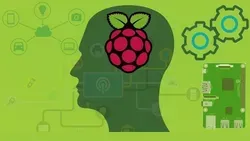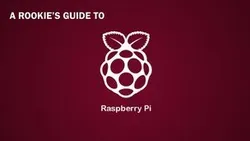
The Raspberry Pi Platform and Python Programming for the Raspberry Pi

This course provides an introduction to the Raspberry Pi platform and Python programming for the Raspberry Pi. Participants will learn how to set up the Raspberry Pi environment, get a Linux operating system running, and write and execute basic Python code. Additionally, they will explore Python-based IDE (integrated development environments) and how to trace and debug Python code on the device. No discussion forums are included.▼
Course Feature
![]() Cost:
Cost:
Free
![]() Provider:
Provider:
Coursera
![]() Certificate:
Certificate:
Paid Certification
![]() Language:
Language:
English
![]() Start Date:
Start Date:
10th Jul, 2023
Course Overview
❗The content presented here is sourced directly from Coursera platform. For comprehensive course details, including enrollment information, simply click on the 'Go to class' link on our website.
Updated in [March 06th, 2023]
This course provides an introduction to the Raspberry Pi platform and Python programming for the Raspberry Pi. Students will learn how to set up the Raspberry Pi environment, get a Linux operating system running, and write and execute basic Python code on the device. Additionally, students will learn how to use Python-based IDE (integrated development environments) for the Raspberry Pi and how to trace and debug Python code on the device. No discussion forums are included in this course.
[Applications]
After completing this course, students should be able to apply their knowledge of the Raspberry Pi platform and Python programming to create their own IoT devices. They should be able to set up the Raspberry Pi environment, install a Linux operating system, write and execute Python code, and use Python-based IDE for the Raspberry Pi. Additionally, they should be able to trace and debug Python code on the device.
[Career Paths]
1. IoT Developer: IoT developers are responsible for designing, developing, and deploying Internet of Things (IoT) solutions. They use the Raspberry Pi platform and Python programming to create connected devices that can interact with each other and the environment. They must have a strong understanding of hardware, software, networking, and security. As the demand for IoT solutions continues to grow, the need for experienced IoT developers is expected to increase.
2. Robotics Engineer: Robotics engineers use the Raspberry Pi platform and Python programming to design, develop, and deploy robotic systems. They must have a strong understanding of robotics, computer science, and engineering principles. As the demand for robotics solutions continues to grow, the need for experienced robotics engineers is expected to increase.
3. Embedded Systems Engineer: Embedded systems engineers use the Raspberry Pi platform and Python programming to design, develop, and deploy embedded systems. They must have a strong understanding of hardware, software, networking, and security. As the demand for embedded systems continues to grow, the need for experienced embedded systems engineers is expected to increase.
4. Data Scientist: Data scientists use the Raspberry Pi platform and Python programming to analyze and interpret data. They must have a strong understanding of data analysis, machine learning, and statistics. As the demand for data-driven solutions continues to grow, the need for experienced data scientists is expected to increase.
[Education Paths]
1. Bachelor of Science in Computer Science: This degree path focuses on the fundamentals of computer science, including programming, software engineering, computer architecture, and operating systems. It also covers topics such as artificial intelligence, computer networks, and computer graphics. With the increasing demand for IoT devices, this degree path is becoming increasingly popular and is a great way to gain the skills needed to develop and design Raspberry Pi projects.
2. Bachelor of Science in Electrical Engineering: This degree path focuses on the fundamentals of electrical engineering, including circuit design, signal processing, and embedded systems. It also covers topics such as robotics, control systems, and digital signal processing. With the increasing demand for IoT devices, this degree path is becoming increasingly popular and is a great way to gain the skills needed to develop and design Raspberry Pi projects.
3. Master of Science in Computer Science: This degree path focuses on advanced topics in computer science, such as machine learning, data mining, and computer vision. It also covers topics such as distributed systems, computer networks, and software engineering. With the increasing demand for IoT devices, this degree path is becoming increasingly popular and is a great way to gain the skills needed to develop and design Raspberry Pi projects.
4. Master of Science in Electrical Engineering: This degree path focuses on advanced topics in electrical engineering, such as power systems, control systems, and digital signal processing. It also covers topics such as robotics, embedded systems, and computer networks. With the increasing demand for IoT devices, this degree path is becoming increasingly popular and is a great way to gain the skills needed to develop and design Raspberry Pi projects.
Pros & Cons
-

Easy introduction to Raspberry Pi and Python.
-

Gives required knowledge to kickstart Raspberry Pi learning.
-

Teaches basics of Python and UNIX.
-

Helpful for understanding ways to use Raspberry Pi Platform.
-

Good teaching and peer reviewed assignments.
-

Short videos for learning in a deep way.
-

Need necessary equipment before starting.
-

Plagiarism in peer reviewed assignments.
-

No reading material.
-

Grading of assignments not done.
Course Provider





